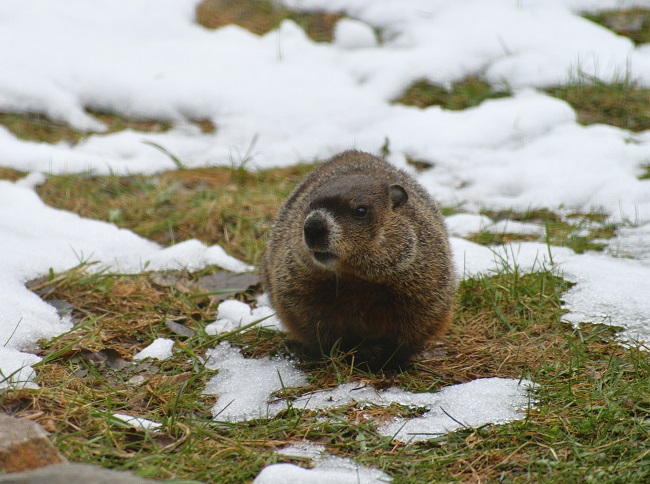
Groundhogs are the largest species in the squirrel family. Other names for groundhogs include woodchucks, whistle-pigs, and land-beavers. Groundhogs are skilled climbers and swimmers, which helps them to escape less-skilled predators. Groundhogs build incredibly complex living chambers and they can also be a bit sleazy, as they are known to whistle at potential mates, thus the nickname whistle-pigs.
To help you celebrate Groundhog Day, enjoy these eight fun facts about them.
They are Vegetarians
The Groundhog Diet consists mainly of grass, herbs, and plants like dandelions, daisies, and goldenrods. They also have an eye for human crops, like carrots and corn, which doesn’t make them a favorite with gardeners and farmers. They will also occasionally eat tree bark.
They are Related to Squirrels
Groundhogs (Marmota Monax) are a type of rodent known as a marmot, and marmots are closely related to squirrels.
They Have a Large Habitat
Groundhogs have an extensive range and can be found all over North America. They are the most widely distributed marmot, with a range stretching as far south as northern Alabama to northern Canada—and some are even found in Alaska.
They are Filling in For Other Animals
While the reported origins of Groundhog Day are many, the concept is thought to be linked to the Germanic tradition of Candlemas Day. According to folklore, a sunny Candlemas Day means a longer winter. In Europe, however, the animal used was generally a hedgehog or a badger. How it wound up being the groundhog’s responsibility in the U.S. may have been a bit of a fluke.
Woodchuck has Nothing to do With Wood
Surprisingly, the name woodchuck doesn’t have anything to do with wood. It’s thought to be a corruption of the Native American words wejack, woodshaw, or woodchoock. It may have its roots in the Algonquian (or perhaps Narragansett) name for the animal: wuchak. Other sources claim it’s a bastardization of the Cree word otchek for “fisher” or the Ojibwe ojiig, also for “fisher” or “marten,” which Europeans appropriated and misapplied to the groundhog.
They are Master Builders
A groundhog’s burrow can be anywhere from eight to 66 feet long, with multiple exits and several chambers. There can be several levels to their burrows, including one for hibernation, a nursery chamber, and one with easier access to the surface that they live in primarily during summer. Their burrows even have separate rooms that are used as bathrooms. In some cases, groundhogs have more than one residence and move from one burrow to another.
They are Solitary Creatures
Unlike some of their cousins, such as prairie dogs, groundhogs are basically loners, seeking out their own kind only to mate.
They can Sleep Better Than a Teenager
Groundhogs are known as “true hibernators,” going into a dormant state—in which their body temperature and heart rate fall dramatically—from late fall until late winter or early spring. True hibernators are the ones that can reduce their body temperature below 68 degrees Fahrenheit and their heart rates slow from 80 beats per minute to just five.
Related Articles & Free Email Newsletter Sign Up
5 Things Every Ferret Owner Should Know
6 Fun Facts About Red Eared Slider Turtles


Comment here